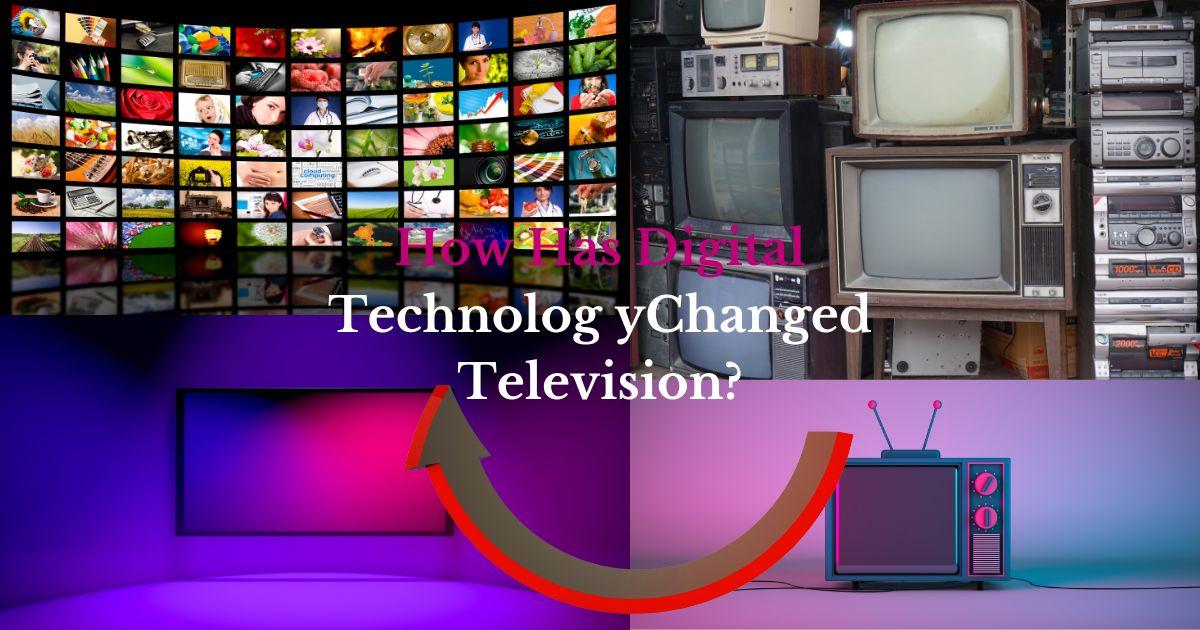Introduction
Television, which used to be a boxy fixture in living rooms, has changed significantly over a long period of time which has been greatly appreciated by the advent of modern innovation. From the way material is delivered to the visual encounter itself, computerized advances have revolutionized the medium. In this article, we will investigate the major changes that computerized innovation has brought to TV and why these changes are seen as significant improvements.
Development of TV: Understanding Computerized Technology
Television has come a long way since its inception. At first, it depended on analog signals transmitted via wireless transmission to deliver content to viewers. Be that as it may, the drive for computerized innovation has opened up a bunch of conceivable results, reshaping every aspect of the TV landscape.
1. Improved picture and sound quality
The most noticeable improvement brought about by almost any modern innovation is the increase in picture and sound quality. Analog signals were vulnerable to interference, resulting in fluff images and distorted sound. Computerized signals, on the other hand, offer fresh, clear images and immersive sound, giving viewers a more enjoyable viewing experience.
2. More channels and substance typ
modern innovation has ushered in the era of on-demand viewing. Streaming giants like Netflix, Hulu, and Amazon Prime Video have revolutionized the way we consume TV content. Viewers now have the opportunity to watch their favorite images and motion pictures at any location and wherever they want, without being tied to traditional broadcast schedules.
4. Intelligent highlights and instant screen experiences
Digital innovation has given TV the power to end up being more intuitive than ever before. Many consumer TVs currently come equipped with highlights that allow viewers to lock in unused methods, such as acquiring approximately additional data or participating in surveys and tests. Additionally, the dominance of smartphones and tablets has led to an increase in on-screen encounters, where viewers can lock in with complementary content or social media while watching TV.
Why advanced innovation is an improvement.
Now that we’ve explored how modern innovation has changed the TV, let’s examine why these changes are considered improvements.
1. Better access
Digital innovation has made TV more accessible to a much wider group of viewers. With the proliferation of spilling administrations and online stages, viewers no longer need expensive cable memberships to appreciate high-quality content. This wide openness guarantees that more people can take an interest in the social discussions and shared experiences that TV provides.
2. Personalized viewing experiences
Another benefit of computerized innovation is the ability to personalize the viewing encounter. Spilling calculations analyze client inclinations and look at trends in prescribing substances according to people’s tastes. This indicates that viewers are more likely to find unused appearances and motion pictures that they will appreciate, upgrading their overall viewing experience.
3. More remarkable adaptability and convenience
Digital innovation provides unparalleled flexibility and comfort. With the option of on-demand viewing, viewers can watch material on their own schedule, eliminating the need to organize their day around broadcast times. Also, the ability to stream content to multiple gadgets means that viewers can appreciate their favorite photos and motion pictures wherever they are, be it at home or on the go.
4. Opportunities for imaginative narrative
The move towards computerized innovation has opened up new avenues for narrative and imaginative expression. With stages contributing to unique material faster, creators have more opportunities to explore different stories and explore with diverse groups. It has led to a renaissance in TV storytelling, which appears to push boundaries and challenge traditional conventions.
how has digital technology changed television? why is it an improvement? Red More…
FAQs For How Has Digital Technology Changed Television? Why Is It an Improvement?
Q: How did modern innovation develop television?
Modern innovation has advanced TV in a variety of ways, improving picture and sound quality, increasing content ratings, empowering on-demand viewing alternatives, and promoting intuitive experiences.
Q: What are some cases of computerized innovation in television?
Examples of recent innovations in TV include high-definition (HD) and ultra-high-definition (UHD) shows, streaming services like Netflix and Hulu, smart TVs with intuitive highlights, and encouragement from smartphones and tablets. Added instant screen competitions.
Q: Is computerized TV better than analog television?
Many people consider modern TV to be more popular than analog TV due to its superior picture and sound quality, more substantial channel assortment, and accessibility of on-demand viewing options.
What Is Digital Technology?….
Result
Digital innovation has changed TV in significant ways, with advertising viewership growing incredibly. From upgraded picture and sound quality to personalized content recommendations and on-demand selection, the benefits of modern advancements are clear. As innovation continues, TV will undoubtedly remain at the cutting edge of excitement, captivating groups of viewers with compelling storylines and immersive encounters.










